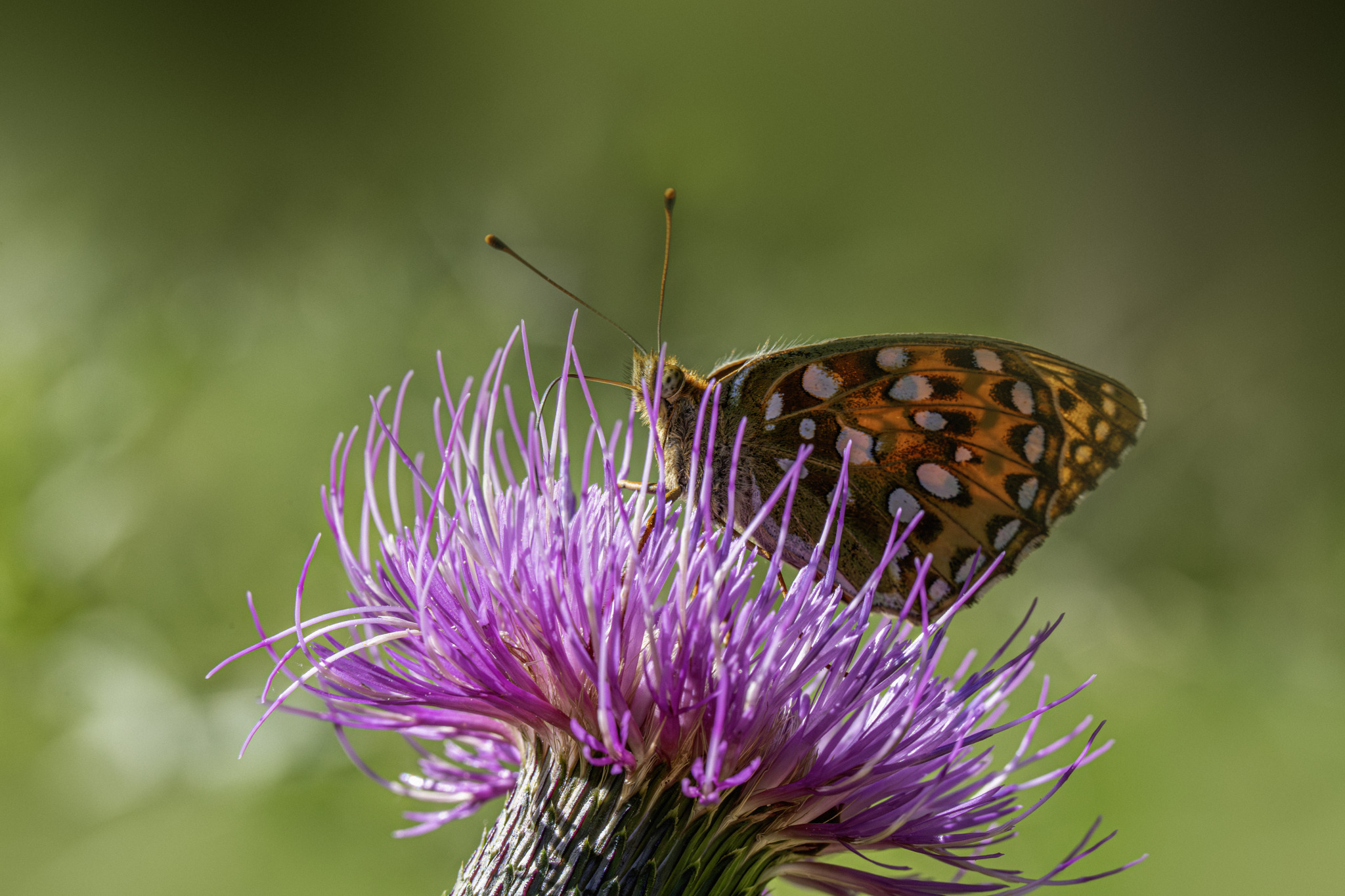The Dark Green Fritillary (Argynnis aglaja) is a striking butterfly known for its vibrant colors and intricate patterns. Here’s an overview of this beautiful species:
Appearance
- Size: The wingspan of the Dark Green Fritillary ranges from 54 to 70 mm (2.1 to 2.8 inches).
- Coloration: The upper side of the wings is bright orange with black spots and streaks. The hindwings have a row of black spots near the edge.
- Underside: The underside of the forewings is similar to the upperside but paler, while the hindwings are greenish-brown with a series of white or silvery spots, giving the butterfly its name.
Habitat
- Range: Argynnis aglaja is found across Europe, including the British Isles, and into Asia as far as Japan. It is absent from the northernmost parts of Scandinavia.
- Environment: This butterfly prefers a variety of habitats, including grasslands, meadows, heathlands, open woodlands, and coastal dunes. It thrives in areas with abundant wildflowers.
Behavior
- Feeding: Adults feed on nectar from various flowers, including thistles, knapweeds, and brambles. They are often seen feeding in sunny spots.
- Flight: The Dark Green Fritillary has a strong, fast flight and can cover large areas while searching for food and mates.
- Activity Period: They are typically active from June to August, with peak activity varying slightly depending on the local climate.
Life Cycle
- Eggs: Females lay their eggs singly on or near the host plants, which are primarily violets (Viola species).
- Larvae: The caterpillars are black with rows of orange spines and feed on the leaves of violets. They are nocturnal feeders and spend the day hiding in leaf litter.
- Pupation: Pupation occurs in a chrysalis that is attached to vegetation close to the ground. The chrysalis is brown with golden spots.
- Adults: Adults emerge in early summer and have a lifespan of a few weeks, during which they feed, mate, and lay eggs.
Adaptations
- Camouflage: The mottled green and brown underside of the hindwings provides excellent camouflage when the butterfly is at rest with its wings closed, blending in with the surrounding vegetation.
- Thermoregulation: The dark green spots on the hindwings help with thermoregulation, absorbing heat from the sun to enable the butterfly to remain active in cooler temperatures.
Ecological Role
- Pollination: As nectar feeders, Dark Green Fritillaries play an important role in pollinating various wildflowers.
- Prey: They are preyed upon by birds, spiders, and other predators, contributing to the food web.
Conservation
- Status: While the Dark Green Fritillary is not considered endangered, its populations can be affected by habitat loss, changes in land use, and the decline of host plants.
- Conservation Efforts: Conservation efforts include protecting and managing habitats, promoting wildflower meadows, and ensuring the availability of host plants for the larvae.
Interesting Facts
- Migratory Behavior: Unlike many fritillaries, the Dark Green Fritillary can exhibit some migratory behavior, with individuals sometimes traveling significant distances.
- Variability: There is noticeable variability in the size and coloration of this species, with northern populations generally being smaller and darker than those in warmer regions.
The Dark Green Fritillary (Argynnis aglaja) is a remarkable butterfly with vibrant colors and intricate patterns. Its presence is an indicator of healthy, flower-rich habitats, making it an important species for conservation efforts.
Visited 821 times, 3 visit(s) today
Views: 1268
Subscribe to the newsletter:
